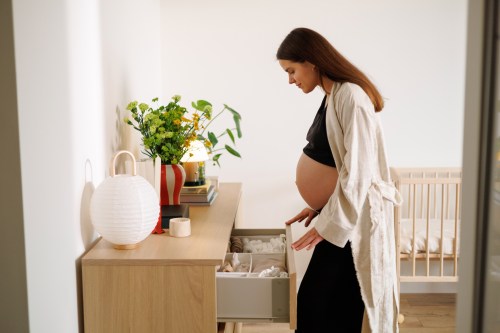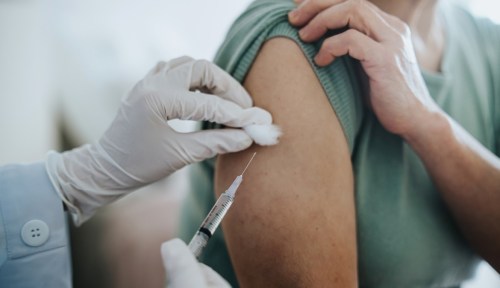Our editors independently select these products. Making a purchase through our links may earn Well+Good a commission
Menstruating can be debilitating. Probably much more than we talk about, since, even in 2023, the subject remains taboo. Painful periods, known as dysmenorrhea, are known to affect up to 90 percent of adolescents, and 25 percent of adults who ovulate. That’s a huge chunk of the population. Yet, we largely expect everyone to work right through the discomfort.
Experts in This Article
menstrual equity activist and founder of August, a sustainable period care brand
CEO of August
One country taking this into account, however, is Spain, which made history in February by becoming the first country in Europe to grant workers the right to paid menstrual leave. This means people will be able to take time off work to manage painful symptoms associated with their periods.
This is not just about promoting a healthy workplace culture (though it definitely can help with that). Paid menstrual leave also has the potential to boost productivity.
In fact, several studies have demonstrated that ignoring the impact of periods on employees can have a significant effect on work efficiency. Research indicates that people who menstruate often work through the pain and discomfort of their periods, resulting in decreased productivity. For instance, a Dutch survey of 32,748 women conducted in 2019 revealed that trying to work through painful, exhausting, or heavy periods resulted in the equivalent of nine lost workdays per person, per year, based on the decrease in how much they got done. Think about it: They could have spent those days resting, then come back to work fully charged.
“I think that it is essential to cultivate understanding workplace cultures that are mindful of natural needs and physical pain,” Nadya Okomoto, founder and CEO of August, a lifestyle brand working to destigmatize periods, tells Well+Good. “So many menstruators experience period cramps, and that can range from manageable pain to levels of pain that make it hard to get out of bed or be moving around.”
An estimated 10 percent of American menstruators between the ages of 25 and 45 suffer from endometriosis, a condition that causes excessive cramps, as well as abnormal or heavy flows. Meanwhile, an estimated 26 million Americans have uterine fibroids, which can also lead to severe and frequent pain during periods. According to data from the National Library of Medicine, fibroids are even more common and more severe among Black communities, which puts them more at risk for not being able to fully participate in work.
“We need more understanding workplaces that either have menstrual leave, or allow for more flexibility for physical pain, so that people can focus on recovery to show up feeling better when they aren’t experiencing period pain,” Okomoto says. “Menstrual leave is part of a larger discussion about how we think about work versus rest versus healing.”
“Menstrual leave is part of a larger discussion about how we think about work versus rest versus healing.” —Nadya Okomoto, CEO August
At the moment, only two companies in the U.S. offer paid menstrual leave: software company Nuvento and astrology company Chani.
“It can be incredibly painful to have a uterus and most of us are taught to ignore or push through that pain from a young age,” Chani CEO Sonya Passi tells Well+Good. “At Chani, we don’t want any of our employees to work while they are in pain. We intentionally distinguished this as its own type of leave because if you have period pain, you are not sick, and so shouldn’t have to deplete your sick days. We knew that if we made it its own type of leave, people would actually use it.”
“We don’t want any of our employees to work while they are in pain.” —Sonya Passi, Chani CEO
When asked if she’s noticed an overall change in employees’ behavior at work, Passi’s response is optimistic. “Put it this way: Our staff are using it, our staff are happy, our users love the app, and our revenue keeps growing,” she says.
At the same time, Okomoto acknowledges that paid menstrual leave could be a double edged sword. “We’ve seen examples of paid menstrual leave hurt menstruators’ chances of being promoted or included in work opportunities, given the unfair assumption that they won’t be as available because of the cyclical nature of periods,” Okomoto says. “I think that ideally, we move towards a work culture that just has an overall flexibility about taking time off and resting when in pain.”
In addition to the productivity benefits, there are also significant health and workplace culture benefits when employees are given the flexibility to not work or work from home during their period to better manage the pain.
For one, it could encourage open conversations about periods and the effects could create a more comfortable environment for people to discuss their health with employers and colleagues. This could help to eliminate the stigma around menstruation, leading to improved well-being and increased company loyalty.
“Ideally we would see more employee satisfaction in feeling respected and valued by their employers,” says Okomoto. “People cannot do their best work when they are in physical pain, so we would hope that policies like this help people work smarter, not necessarily harder/longer.”
Okomoto believes the path to more U.S. companies offering paid menstrual leave should start with federal legislation. “First we need to see federal legislation that actually acknowledges period care as a necessity for all people,” she says. “Right now we still have 20 states that have the tampon tax, and we are still waiting for there to be free period care in schools, shelters, and prisons. American capitalism is so intense that right now there is not an incentive to offer paid menstrual leave for all workers, especially lower-level employees who either work manual jobs or whose roles involve constant physical activity (for example, working in retail).”
Of course, this is no small ask. Okomoto admits that in order to see widespread policy for paid menstrual leave, the U.S. would need an “extreme cultural change” on how we view labor—and also how we respect people’s biological, natural needs.
Sign Up for Our Daily Newsletter
Get all the latest in wellness, trends, food, fitness, beauty, and more delivered right to your inbox.
Got it, you've been added to our email list.











